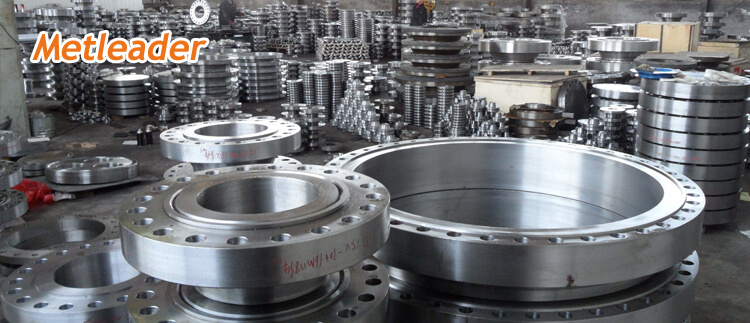Large diameter flange
Large diameter flange usually means that the flange's specification exceeds the size specified in ordinary international standard. Generally refers to DN2000 above the size of flange. Such products are all welded products, without wire buckle, wire buckle products are often used to the specification of dn15-dn100. Due to the particularity of diameter, the manufacturer needs customers to provide the drawings of flange, according to the drawings of flange production. Due to the large diameter of flange, the production of equipment requirements are relatively high, each process is required to be equipped with large equipment.

Large diameter flange has different application values in the process of using, which has different kinds of producing results and USES. Large flange raw materials are different, production and processing technology is different, so in the use and processing of large flange to pay special attention to the method, in accordance with certain procedures and methods to use. Large flange common all large flange flat welding large flange and butt welding large flange. Flat welding large flange rigidity is poor, the scope of application is the pressure p less than 4MPa occasion; Butt welding large flange also known as large neck flange, rigid, suitable for high pressure and temperature occasions.

Theoretical calculation formula of Large diameter flange(carbon steel)
1. Divide (outer diameter - inner diameter) by 2 to get the result.
2. Reuse (outside diameter - above results)X above results X0.0246615X thickness
After the above two steps, the theoretical weight of the large flange is obtained.
For example: outer diameter 2600mm, inner diameter 2400mm, thickness of 50mm large flange carbon steel flange
(2600-2400) / 2 = 100 mm
(2600-100) x100x0. 0246615 x0. 05 = 308.2688 KG
Weight is usually rounded to two decimal places. (note: for large flange of stainless steel, just replace the top X0.0246615 with 0.02491.)

Why does Large diameter flange distortion?
1.When welding large diameter neck flanges and stainless steel cylinders, it takes too long to complete one round of welding because of the large diameter of the flange, poor rigidity and long weld. During the welding process, the heating and cooling rate of the fusion zone and the cooling time interval of the discontinuous weld are too long, resulting in an unbalanced heating of the entire weld. The shrinkage deformation of the weld is uneven.
2.When the circumferential heating part of the flange welding zone is cooled by the weld seam, the circumferential weld seam of the flange welding zone shrinks greatly, further aggravating the deformation expansion. The flange is irregularly elliptical in the circumferential direction, partial concave, and partial convex. At the same time, due to the effect of the welding contraction force, the inner circumference of the flange becomes smaller, and the outer flange temperature is lower, so the input heat of the flange is small, the rigidity is good, and there is substantially no contraction; therefore, the flange section is twisted, The flange surface has a significant reversal, and the central axis of the flange bolt hole no longer coincides with the cylinder axis. In parallel. It turns out that this subversive power is very large. After welding the groove of the upper flange section to the cylinder, there is still no improvement in deformation.

Large-diameter flat-welded flanges and similar large-diameter annular workpieces are easily deformed due to poor stiffness of the structure itself and when the stiffness is not strengthened and the local heat input is uneven. The amount of deformation varies with the amount of heat input. The relative diameter of such a workpiece is much smaller. Make it hard enough before welding or heating. At the same time, the amount of heat input, the uniformity of the input heat, and the slow cooling after heating should be controlled during the welding and heating process.







